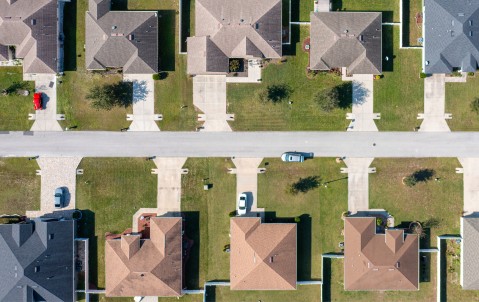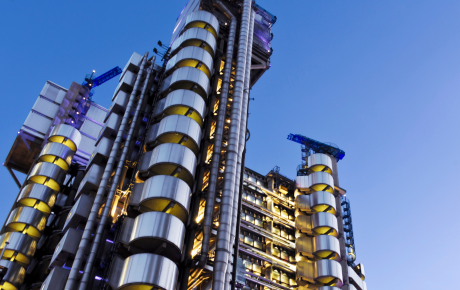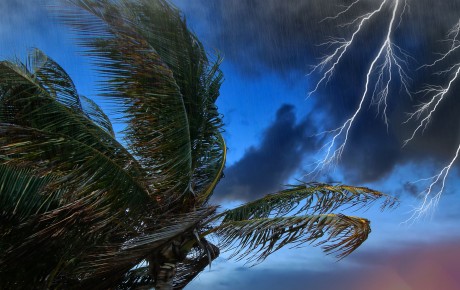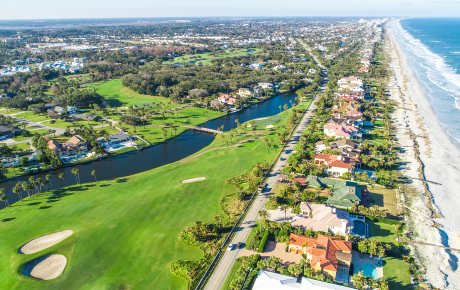
Building in resilience for an uncertain climatic future
The US is facing a property insurance crisis for many homeowners struggling to access the cover they need. In the face of rising losses from natural catastrophes such as wildfire and flood, premiums have risen significantly while some insurers have withdrawn from the market altogether. It’s why actions such as a more stringent enforcement of building codes and homeowners adapting their homes to better withstand greater climatic risks are critical in the journey towards a sustainable and affordable property insurance market.
Standing alone in the charred devastation of last summer’s fires on the Hawaiian island of Maui which all but destroyed the town of Lahaina, a single house remained almost untouched. At over 100 years old, 271 Front Street became known as the ‘miracle house’ for surviving the wildfires. But it’s a miracle that can be explained by steel and stone, specifically the fire prevention measures the owners installed when undertaking a major renovation a few years prior which included a commercial grade steel roof, as well as stone-based landscaping around its perimeter. “This house is a powerful symbol of what can be done to protect homes from natural catastrophe risk such as wildfire,” says Hiscox’s Joseph Pennyfather, Binding Authorities Line Underwriter. “And given the US P&C results in recent years, whether it’s retro fitting old houses or ensuring building codes have risk mitigation measures baked in, the sustainability of the household insurance market in the US depends on concerted action to help build in greater resilience to meet the growing challenge of climate change.”
A difficult market
Recent data paints a troubled picture for the US home insurance market with insurers experiencing an underwriting loss of over US$15 billion in 2023. The FT reports the American Property Casualty Insurance Association attributing these poor figures to increased coverage demands for higher values, a growing frequency of losses, as well as the inflationary effect on repairs. “These factors are combining to force some insurers to reduce their exposure, push up prices, or even withdraw altogether from natural catastrophe exposed risk for home owners,” says Pennyfather.
One state where the situation has reached crisis point for property cover is California where admitted insurers and direct writers have reduced their exposure or pulled out of the region completely. State Farm, for example, the biggest home insurer in California, announced in May that it would “pause issuing policies” due to wildfire risk. Elsewhere, Farmers Insurance has withdrawn from the Florida market altogether and in Louisiana, a number of home insurance companies have become insolvent in recent years, forcing the state-run insurer – Louisiana Citizens Property Insurance – to balloon in size.
Built to withstand all weathers
Many commentators recognise that the solution to this property insurance crisis in the US lies in the need for houses to be built and renovated to higher standards that can withstand the increasing natural catastrophe risk, which in turn will provide insurers with greater confidence that their losses can return to more acceptable levels. In 2023 the federal government announced a US$90 million fund to help promote and implement effective building codes both for new buildings and those being renovated, with US government figures suggesting that two out of every three communities have not yet adopted the latest building codes. “The development of more stringent building codes throughout the US can help to reduce the damage from natural catastrophe events,” says Pennyfather. “But just as important is the need to make sure that those codes are properly implemented.” According to the US Federal Emergency Management Agency (FEMA), “The inconsistent adoption of building codes is one of the most significant factors that compounds risk and increases costs from natural hazards.”
Incentivise homeowners
Improved and enforced building codes are one critical area that can help promote resilience, but there is also more that homeowners can do for themselves. Like the homeowner in Maui who managed to protect their house from wildfire, there are a range of measures that can help defend against natural catastrophe risk. “Whether it’s more controlled landscaping to prevent wildfire spread and damage, sprayers that can cover a house in fire resistant foam, or roofs built to withstand greater wind speeds, there is much that homeowners can do to mitigate the impact of a fire, wind or flood event,” says Pennyfather.
Recognising the importance of homeowners taking action, Louisiana is offering a financial incentive to homeowners through its Louisiana Fortify Homes Program which offers grants of up to US$10,000 to help homeowners upgrade their roofs to make them as hurricane proof as possible. But, adds, Pennyfather, the insurance industry can also incentivise actions by homeowners to promote improved resilience: “We will help customers by offering attractive terms where effective risk mitigation is in place in and around their home.”
A concerted approach
Ultimately, ending the crisis in the property insurance market will demand a concerted approach from all stakeholders including homeowners, legislators, as well as the insurance industry. But, says Pennyfather: “Doing nothing is not an option. It needs the federal and state authorities to get better at developing and implementing building codes that can offer protection against natural catastrophe risk, while homeowners can ease the burden of future losses by focusing on mitigation efforts. Measures like this will, in turn, allow the insurance market to be confident in the provision of cover, while also better recognising and rewarding those insureds who are taking steps to prevent their homes becoming a victim of a natural catastrophe.”




